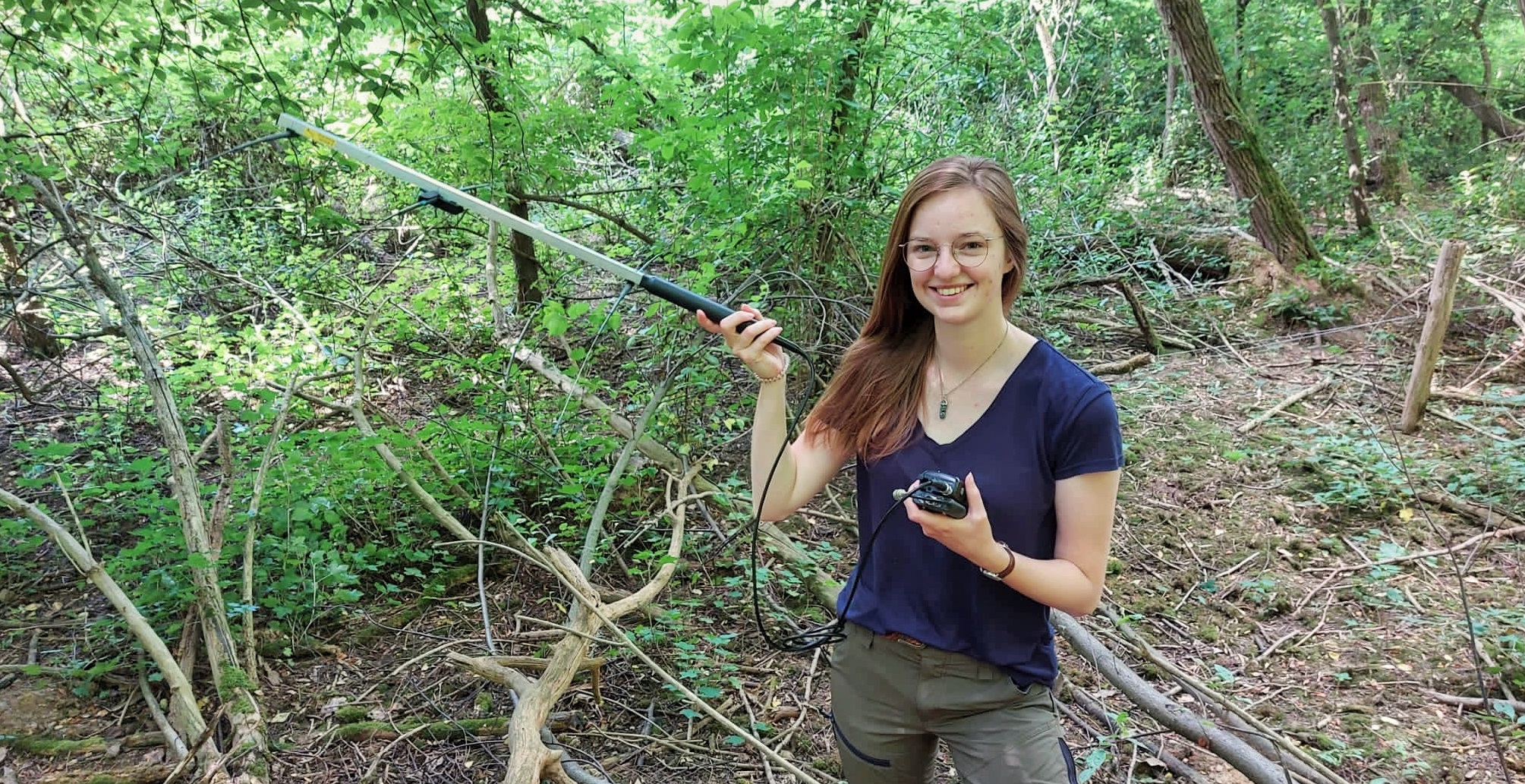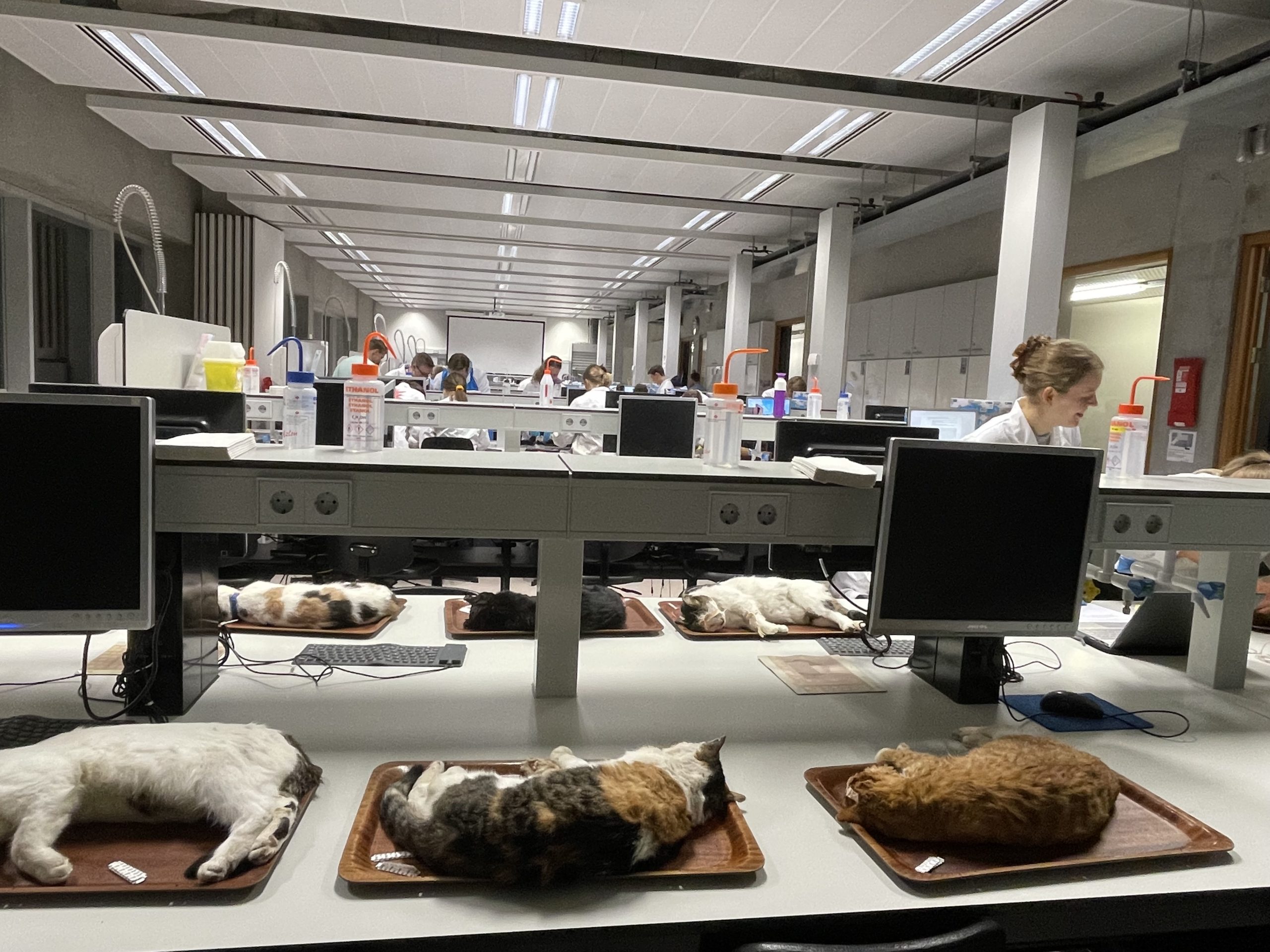You are not likely to have heard of the garden dormouse, let alone seen it. It is one of the most endangered mammals in the Netherlands. There are only about 100-150 specimens left, according to the Mammal Association, and they live in the southernmost part of Limburg province.
Since the beginning of May, 15 of these dormice have been wearing collars fitted with small radio transmitters. Since then, Femke Warmer, an MSc student of Forestry and Nature Management, has been monitoring the animals closely. Armed with antennas, she and two students from the VHL (Velp) and HAS (Den Bosch) Universities of Applied Sciences, have been mapping out where they rest during the day and where they move around at night.
Nocturnal animals
‘Garden dormice are nocturnal animals,’ Warmer explains. ‘At night, we follow their activities. We keep a distance of 50-60 metres, because you don’t want to disturb them. And neither do the other animals in the forest, of course. So we stay on the paths. During the day we look for their resting places. They do not always rest in the same place.’
The study of the garden dormice was initiated by the Dutch Mammal Society. This is the Society’s contribution to the Year of the Garden Dormouse, which it declared itself. There are good reasons for paying attention to this little creature. The garden dormouse population is declining rapidly. Through the study, the Society seeks to figure out what is needed to better protect the animal.
‘The aim of the research is to get a fuller picture of where the garden dormice stay, which home range each individual has and what kind of habitat is present there,’ Warmer explains. ‘I follow where they are active and what distances they travel. During the day we map out these places. By linking these data, we obtain a picture of which habitat goes with which activity.’
Dormice
The garden dormouse belongs to the dormouse family of rodents that hibernate in winter. Work started in 2017 on releasing bred mice to maintain the population. These animals come from GaiaZOO in Kerkrade. Some of the tagged garden dormice come from this group, while others are wild specimens.
Antennae are needed for the tracking. A large antenna with a range of up to about 200 metres for a rough location and a small one for shorter distances (up to 30 metres). ‘Each animal has its own frequency. At night, we cross-check every half hour to determine the location. That takes about ten minutes, so we can track three animals a night.’
Fieldwork is great fun. Because of Covid I haven’t been able to do it much of it during my studies.
Femke Warmer, MSc student of Forest and Nature Management
The nightly measuring sessions go on for about four hours from sunset. ‘So at the moment, from 10 pm to 2 am. Yes, you do become a sort of nocturnal animal yourself,’ laughs Warmer. I never thought of myself as an evening person before, but it’s not so bad. But it is physically demanding work overall. You spend about eight hours a day out in the field every day.’
On balance, though, it was a positive experience, Warmer feels. ‘Fieldwork is great fun. Covid meant I didn’t get to do much of it during my studies. And I really like rodents. The garden dormouse is becoming increasingly rare. Through this work I can contribute to the preservation of the species.’

 Photo Femke Warmer
Photo Femke Warmer 
